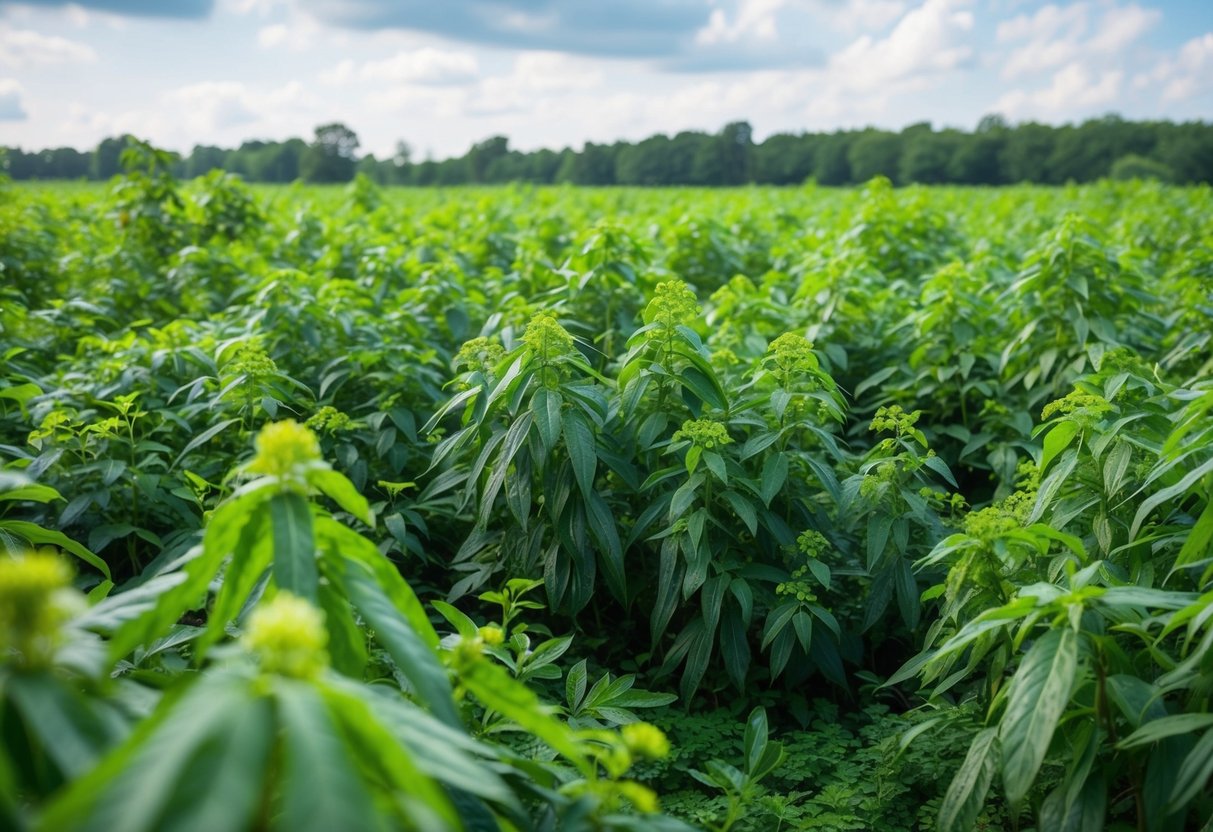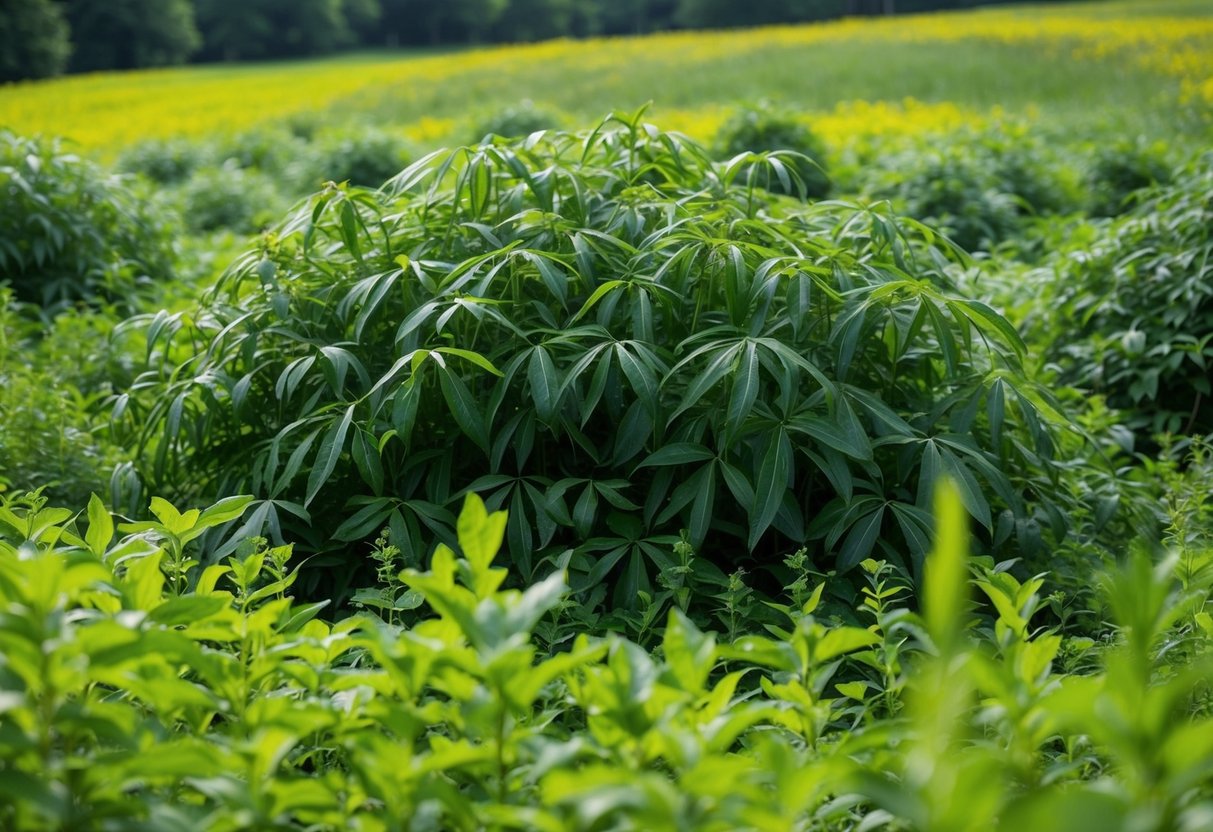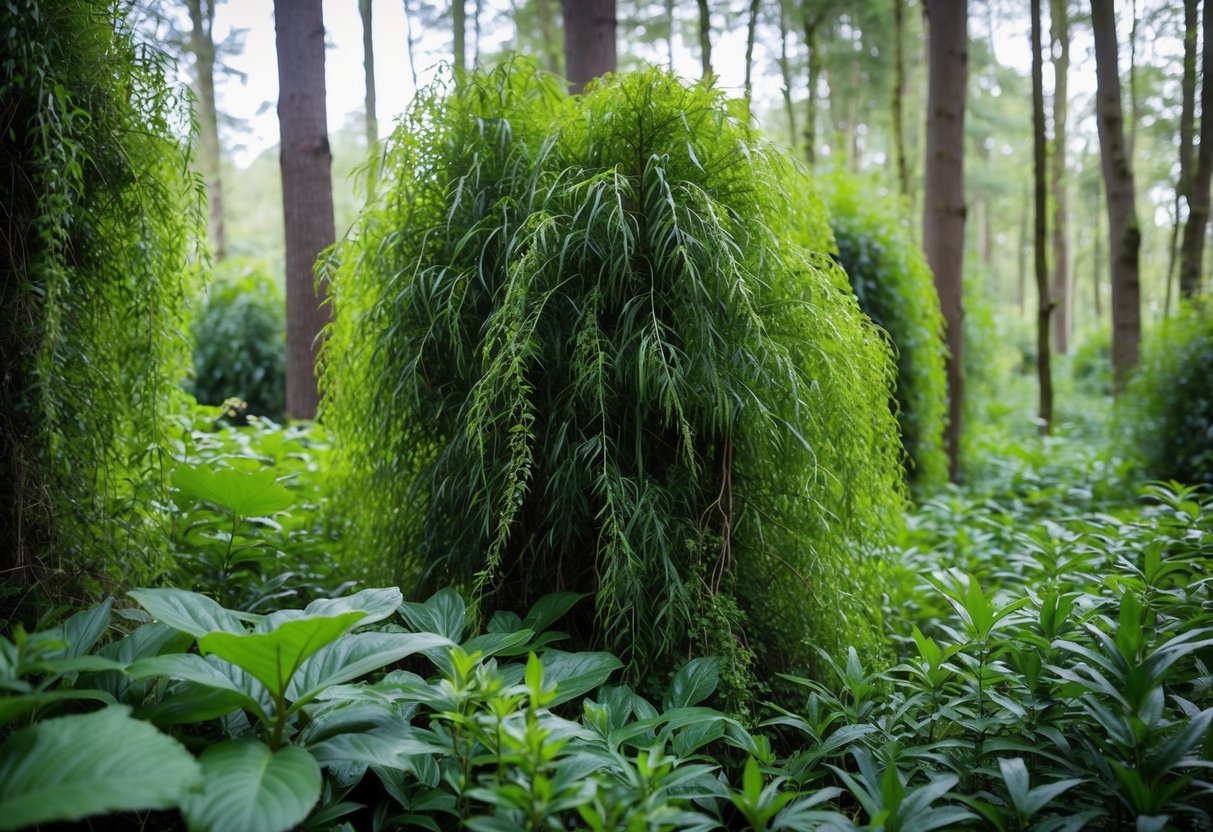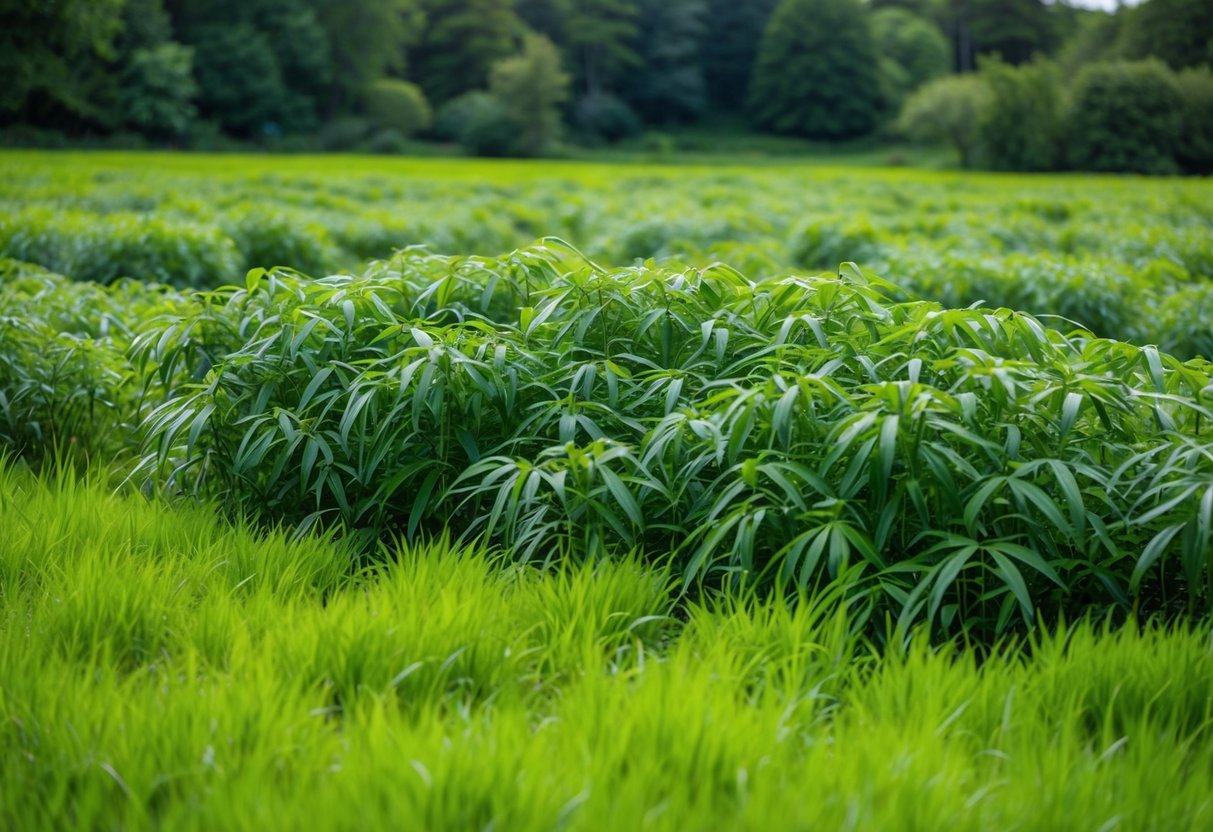What is the Most Invasive Plant in the UK? Exploring Nature’s Intruder!
If you’ve ever strolled through a UK garden, you might have noticed certain plants that seem to take over everything in their path. Among these, Japanese knotweed is often considered the most invasive plant in the UK. This plant, originally introduced as a pretty ornamental species, has become a major environmental concern due to its rapid and aggressive growth.

You might wonder why some plants become so problematic. Invasive plant species like Japanese knotweed can disrupt local ecosystems. They spread quickly, often outcompeting native plants for resources like sunlight and nutrients. This can lead to reduced biodiversity and impact the balance of local environments in the UK.
Understanding which plants pose the greatest risk can help you protect your garden and support local wildlife. If you come across other notorious invaders like Giant Hogweed or Himalayan Balsam, it’s important to know the right steps to manage them. By staying informed, you can help maintain a healthy and balanced environment in your area.
Understanding Invasive Species

Invasive species cause major problems by disrupting local ecosystems and outcompeting native plants. These species often have legal restrictions to prevent their spread and manage their impact on the environment.
Definitions and Characteristics
Invasive species are plants or animals that are not native to an area and cause harm to the ecosystem. They spread rapidly and compete with local species for resources like light, nutrients, and space. This competition can lead to reduced biodiversity. Non-native species can become invasive if conditions allow them to thrive at the expense of native species.
Characteristics of invasive plants include fast growth, high reproduction rates, and the ability to adapt to different environments. They often lack natural predators, which allows them to reproduce unchecked. Examples include Japanese knotweed and Himalayan balsam, which are known for their aggressive spread and impact on native ecosystems.
Legal Framework and Policy
To manage the threat of invasive species, laws and regulations are in place. In the UK, the Wildlife and Countryside Act and its Schedule 9 list species that are illegal to plant in the wild. The UK government outlines rules on handling invasive plant species to protect local biodiversity. For guidance, check the government’s website.
Policies aim to prevent the introduction of these species through transport and trade. Programs are in place to eradicate or control existing populations, with cooperation from environmental agencies and local communities. These efforts are crucial in safeguarding the natural environment and maintaining ecological balance.
Most Invasive Plants in the UK

In the UK, certain plants pose significant challenges due to their aggressive growth and ability to outcompete native species. Understanding these invasive plants can help you identify and manage them effectively.
Japanese Knotweed
Japanese Knotweed is a highly invasive plant that can cause severe damage to property and ecosystems. Originally brought to the UK as an ornamental plant, it quickly spread due to its rapid growth. Its roots can grow through concrete and tarmac, making it a concern for homeowners. This plant is known for its green, bamboo-like stems and small white flowers.
You must be cautious if you spot Japanese Knotweed in your garden. Controlling it requires persistent management. You might even need professional assistance to ensure it doesn’t cause damage or spread further. Learn more about addressing this plant’s challenges with helpful strategies.
Giant Hogweed
Giant Hogweed is another invasive plant that can be dangerous to humans. It resembles the cow parsley but grows much taller, reaching heights of up to 5 meters. Its sap can cause severe skin burns and blisters when exposed to sunlight. It’s commonly found along riverbanks and in waste areas, and its spread is difficult to control once established.
If you encounter this plant, avoid direct contact with it. Wear protective clothing and use appropriate removal methods if you attempt to manage its spread. You can find more information on safe practices for handling this hazardous plant.
Himalayan Balsam
Himalayan Balsam is a large annual plant that grows up to 2 meters tall. It’s recognized for its pink, helmet-shaped flowers and explosive seed pods. It’s found along riverbanks and in damp areas, where it easily outcompetes native plants.
The plant’s ability to spread rapidly means it often takes over large areas, leading to ecological concerns. But there are ways to manage it. Pulling the plants before they seed is one effective method. Discover more tactics for dealing with this plant.
Rhododendron Ponticum
Rhododendron Ponticum is a shrub that forms dense thickets and shades out native plants and wildlife. It produces large, showy purple flowers, making it popular in gardens. However, in the wild, its growth can limit biodiversity and contribute to soil acidity.
To control Rhododendron Ponticum, consistent removal of plants and roots is necessary. This can be labor-intensive but essential for preserving local flora and fauna. Read more about sustainable methods to keep it in check.
New Zealand Pygmyweed
New Zealand Pygmyweed, also known as Australian swamp stonecrop, is primarily found in ponds and waterways. It forms thick mats that block sunlight and nutrients from underwater ecosystems. This can severely disrupt aquatic habitat balance.
Managing New Zealand Pygmyweed requires attention to detail. Mechanical removal is often necessary, but you must ensure that fragments do not remain as they can regrow. Familiarize yourself with strategies to combat this aquatic invader effectively.
Impact of Invasive Plants

Invasive plants in the UK cause a variety of issues. They can lead to environmental damage, disrupt infrastructure, and threaten native species. Their presence often results in increased flooding and erosion, impacts on biodiversity, and declines in property value.
Environmental and Ecological Damage
Invasive plants can cause significant environmental damage. For example, they often lead to increased soil erosion. These plants may outcompete native flora for resources such as sunlight and water. This competition can lead to reduced biodiversity since native plants struggle to survive. In turn, animals that rely on these native plants for food or shelter are also affected. Pollinators like bees may find fewer flowering plants to collect nectar from. Without enough food sources, pollinator populations can decline. Some invasive plants also have extensive root systems that contribute to flooding by altering soil composition and water flow. As they spread, controlling them becomes essential, leading to their classification as controlled waste when removed.
Effects on Buildings and Infrastructure
Invasive plants can have negative effects on buildings and infrastructure. They might cause physical damage to structures by growing in cracks or crevices, which weakens buildings over time. Some plants are notorious for affecting roads, bridges, and drains. Their roots can penetrate and damage foundations, leading to expensive repairs. For property owners, this damage can reduce property value. Growth around drainage systems may cause flooding by blocking water flow. This can lead to additional costs for maintenance and repair. Not only do invasive plants affect the structure itself, but they also make nearby areas less appealing to potential buyers or tenants.
Impact on Biodiversity and Native Species
The presence of invasive plants can be devastating for native species and biodiversity. They often grow rapidly, with some species producing numerous seed pods that disperse quickly. This rapid spread can overpower native plants, leaving them with less space and nutrients to thrive. As native flora declines, the fauna that relies on it for survival also suffers. Animals like birds and small mammals find less food and fewer places to live. This chain reaction affects entire ecosystems. Invasive plants may also introduce diseases or pests to which native species have no resistance, causing further losses in biodiversity. If you want to learn more about the impact of invasive non-native species, the UK’s efforts to manage these issues are detailed in this article.
Control and Management Strategies

When dealing with invasive plants in the UK like green alkanet and American skunk cabbage, it’s important to understand the best ways to control their spread. These strategies include physical and chemical solutions, biological methods, and initiatives by communities and governments.
Physical Removal and Chemical Treatment
Physical removal involves manually digging out invasive plants like Houttuynia or three-cornered garlic. You might need professional removal companies for large areas. It’s crucial to remove the entire root system to prevent regrowth. For chemical treatment, specific herbicides can be used to target plants selectively without harming desired vegetation. Spraying should be done carefully, following environmental protection guidelines, to minimize impact on the surrounding ecosystem.
Biological Control Methods
Biological control uses natural enemies to manage invasive species. This method includes classical biological control, where specific insects or pathogens are introduced to reduce invasive plant populations. For example, certain insects can naturally reduce green alkanet. It’s a sustainable approach since it can keep populations low over time. However, it requires careful planning to avoid unintended effects on native species and ecosystems.
Community and Government Initiatives
Community involvement is vital in combating invasive plants. Local groups often organize clean-up events and educate others on identifying and managing species like American skunk cabbage. These events empower you to take part in environmental protection. Government initiatives also play a crucial role. Strategies like the Great Britain Invasive Non-Native Species Strategy focus on prevention, early detection, and rapid response. These programs help coordinate efforts to effectively manage and reduce the impact of invasive plants across the country.
Best Practices for Prevention

When dealing with invasive plants, it’s important to take practical steps to protect your garden and the environment. Begin by identifying plants you want to add to your garden. Avoid ornamental plants known for aggressive growth, as they might become invasive.
Start by checking the invasive species list to ensure you don’t accidentally introduce harmful species. Some plants may seem harmless but can spread rapidly and outcompete native species, harming biodiversity.
Consider using your garden’s natural enemies—like certain insects or fungi—that can keep invasive species under control. These can be a great organic way to manage potential threats without harming the environment.
If you notice plants such as the swamp stonecrop, take action immediately. You can remove them by hand or use environmentally-friendly herbicides. Early intervention helps stop the spread and protects nearby habitats.
For those who love gardening with a variety of species, choose garden plants wisely. Opt for native species or those proven to adapt without becoming invasive. This helps maintain a healthy balance in your garden and supports local wildlife.
If you need more guidance, there are many resources and organizations ready to help. Connecting with local gardening clubs or environmental groups can provide valuable advice tailored to your area.
By staying informed and proactive, you can enjoy a beautiful garden while protecting the environment.







